Night and day is Virginia Woolf’s second novel. It was published in 1919 by Duckworth and Company. The company was managed by Gerald Duckworth who was Virginia Woolf’s stepbrother on her mother’s side.
Virginia Woolf’s bronze in Tavistock Square
London is a major setting within the novel. The streets are like the living arteries feeding the life blood of the city and connecting people with people. The main characters flow along these streets experiencing life and carrying their thoughts and deductions, imagined and actual to and from each other, insinuating their living organisms into the surroundings. The novel bursts with human experience and the,”realities,” of feeling, emotion and thought. Virginia Woolf set the scenes and actions of her novel at a historical time in tandem, with the time she and her Bloomsbury friends lived and existed in the same streets. The Strand, Kingsway, Southampton Row, Russell Square, Cheyne Walk, The Embankment, Highgate and Chelsea were also the streets and places Lytton Strachey, Clive Bell and Vanessa Bell inhabited too. Mary Datchet could have walked past Virginia Woolf herself walking through Russell Square to her office. Katheryn Hilberry might have seen T.S. Eliot walking into his office at Faber and Faber on the north west corner of Russel Square just as she entered the building on the west side of Russel Square on one of her visits to see Mary Datchet. Work is a theme alongside love and also perceptions of reality as well as the strengths and weaknesses of the spoken and written word. Virginia Woolf in Night and Day, created a parallel, simultaneous world connected to her own world by time, thought, emotion, human reaction and location. It is imbued with ideas and philosophies including Darwinism and Existentialism.
Vanessa Bell(nee Stephens)
The novel opens in the drawing room of the Hilberrys who live in Cheyne Walk in Chelsea, beside the river. Some old friends are meeting and one in particular, Mr Fortescue, an eminent novelist, is talking. Ralph Denham, a young man, enters this tea party. He appears to be there to be shown the artefacts and hear anecdotes about the famous poet, Alardyce. Mrs Hilbery, the daughter of the famous poet and her daughter Katheryn are the keepers of his memory. Mrs Hilbery is in the process of writing a biography of her father and Katheryn’s sole existence appears to be to aid her mother in her ever increasingly hopeless and ineffectual efforts There are elements of a museum about the place. Virginia Woolf and her brothers and sisters were in that same situation themselves. Their father Leslie Stevens was one of the great and good of his generation too. One of the many strands in the novel is a discussion about how the offspring and subsequent generations are affected by the fame and achievements of a famous family member. Are members of the next generation able to break away from the shadow of their ancestor? I am sure Virginia and Vanessa Stephens felt this stifling power over them and this may have resulted in their need to break conventions and explore new ideas and ways of living themselves. As the novel progresses we learn of Katheryn’s interest in mathematics and astronomy. This is her way of being individualistic and being apart from the overbearing presence of the memory of her grandfather.
Cheyne Walk, a view of the Thames.
Families and the fractures caused by the next generation within a family is a major theme. There is Katheryn’s struggle for independence and uniqueness within her family. Ralph Denham comes from a large raucous family who live in Highgate. They epitomise the striving middle classes who want to achieve, who want to change and desperately embrace education. They are of the middle class that has to work and make their own living through being educated and the application of their talents. His brothers and sisters argue and discuss intelligently, philosophy and new ideas in a rough and tumble energetic sort of way. His sister Hester has ambitions to go St Hildas College Oxford and has the confidence to believe that that is where she is bound. Ralph himself is qualified as a solicitor, working at the offices of Messrs Grately and Hooper in Lincolns Inn Fields. Mary Datchet works as a secretary for a suffragette organisation in Russel Square. She is passionate, committed and finally sacrifices her whole self to the cause. She originates from a Lincolnshire family from a small village where her father is a vicar and her brothers go out shooting and are only interested in country pursuits and seem immured in an ancient rural past. The Otways, who are related to the Hilberry’s through Mrs Hilberry, live in a grand country house in Lincolnshire not far from the Datchets. Mr Otway is a retired Colonial Civil Servant who has retired back to England at a much reduced pension and who was disappointed at his lack of promotion and whose family is in decline. He has spent money on the education of his older children, but the younger members have not been educated as well as his money has run out. The younger members of the families are emerging into a modern world with different expectations and ideas. Within the novel you can see how there is a fluidity beginning to take place between different parts of a social class and even between classes epitomised the Otways, the Hilberrys, Datchetts and Denhams. The process is painful and there is a sense of the characters reaching into the unknown.
A Cheyne Walk front door.
Much of the action in the novel is how the characters interact, speak, think, imagine and feel. Their experiences are existentialist in nature. Characters analyse their feelings and emotions and struggle through anxiety towards inconclusive decisions. Often when they have thought they have reached a conclusion they have not. Ralph Denham, in his rooms after meeting, walking and talking with Katheryn Hilbery in Kew gardens anguishes thus,
“He had a flower which he picked at Kew to teach her botany. Such were his relics. He placed them before him, and set himself to visualise so clearly that no deception or delusion was possible. In a second he could see her with the sun slanting across her dress coming towards him down the green walk at Kew….he heard her voice….he could see her faults…once more he told over conscientiously her faults both of face and character….”
Virginia Woolf, provides examples of existentialism in the form of this novel. This is an easier way of portraying it than in a purely academic book. A novel can portray life in action. An example can explains things more clearly. Kirkegaard and Niesche were the two great existentialist philosophers of the end of the 19th century and early 20th century .The above example is also akin to romanticism. Wordsworth believed that through memory and imagination you could bring back experiences which can uplift and re-energise you in the present.
Kew Gardens
Ideas about love and marriage permeate this novel. The main characters struggle throughout with seemingly unsolvable problems of relationships and what they actually feel and want. A very amusing example of the anxieties and thinking things out that goes on occurs when William (Henry) Rodney thinks he has fallen in love with Cassandra Otway on a visit to her country home in Lincolnshire. He thinks he is smitten. However when William makes his feelings clear to Cassandra she rebukes him and is scandalised because he is already engaged to her cousin Katheryn. William has anguished and theorised and reasoned his love for Katheryn up to his encounter with Cassandra. Cassandra changes his feelings. But now she has spurned him he thinks his emotions and love were always with Katheryn. He explains all this to Katheryn expressing his undying love for her. Katheryn is swift and precise in her conclusion. No he doesn’t love her, he loves Cassandra and mustn’t give up his quest. He then sees the light once more and agrees. He evidently doesn’t know his own feelings and the result is this almost pantomime farce. This incident does encapsulate though, in rather a humorous way, the anxieties, reasoning and emotions that swirl and storm about this novel.
Rodin’s The Thinker
Virginia woolf uses various approaches to attempt a portrayal of reality. I enjoyed the way William becomes Henry and Henry becomes William. They are without doubt the same person but depending on who is talking about him and the circumstances, his name is changed between the two, and sometimes within the same speech by the same person. Perhaps his name is changed to emphasise the meaning? He is sometimes portrayed as a joke. Another modernistic trick Virginia Woolf uses to write dialogue is to alternate between what the characters say in their heads, with what they say out loud and also between what they say out loud imagining the person there with what they say out loud to the person actually there. Imagination, and physical presence overlap and combine. There is an underlying theme about what reality might be and how it can be expressed. Cassandra, when she arrives from the Otway country home at the Hilberry’s house in Chelsea see the family dressed for dinner in the evening and is greeted formally. She thinks this must be, “reality.” There is a problem with what is reality throughout the book. Ralph writes in a stream of consciousness way a letter to Katheryn. He does not think about what he is writing. He also draws a picture surrounded by flames, also in this stream of consciousness mode. Both Katheryn and Ralph find words inadequate. Katheryn at one stage, when she is getting close to an understanding of her feelings for Ralph Denham wanders the streets of London looking for him. These are streets she knows well but she is lost in an emotional search for him. She becomes no longer aware of her surroundings and where she is and where she is going. She has begun to tap into her deeper consciousness too. There is so much thinking and analysis throughout the novel but always underlying are emotions and feelings. Ralph and Katheryn, William and Cassandra are drawn to each other not by reasoning but through an unconscious psychology. Maybe the subconscious is the only reality? Freudian theories emerge. During the anguished courtship of Katheryn by Henry Rodney when he is feeling particularly insecure and insignificant and mocked by Katheryn he tries to reason all his good points which he thinks are pertinent to why Katheryn should love him and amongst the points he lists are his intelligence, his expertise in music and his skills as a poet. These points obviously miss the point. He makes himself something ridiculous to the reader and to Katheryn. Virginia Woolf portrays her idea of real love as something much deeper within the subconscious. It is almost a chemical reaction making two people into one, beyond reason and understanding. We are left wondering if there is actually anything we can pin the word, “reality,” to.
Omnibuses on The Strand
There is a strong element of Darwinism pervading the novel. The survival of the fittest. As with Darwin’s theory some strands of life will go on to be productive and develop and others will die out. The characters are organisms immersed in an environment and habitat in which they have to find their niche, their place in evolution. They have to swim about in the,”swamp,” beyond reason. Eventually out of the ,”primeval soup,” William and Cassandra find that they are right for each other and after an even longer gestation process Ralph and Katheryn emerge together. Mary Datchet finds happiness as the evolutionary dead end but she has the satisfaction of adding to the social progress of society through her work with suffragette causes and other good causes. She dedicates her life to this course by the end of the novel and is happy doing this. There is an amusing episode where Darwinism is made explicit. Cassandra is given the choice of having a trip to the zoo, Hampton Court, Kew Gardens or Greenwich. Each has its social and historical meaning for humanity but it’s the zoo that she chooses. The connection with varying species, the survival of the fittest and evolution could not be stronger. Here in Regents Park Zoo are examples of animals who fit their environment and have evolved.
Orangutan
Just at the point the reader thinks that the people involved have solved their problems all their efforts appear to be destroyed, and come to nothing. The prying and snooping Mrs Milvain, one of Mr Hilberrys sisters has been gathering information about the young people. She presents her brother with the shocking evidence that Cassandra appears to be too close to William Rodney and that Katheryn is seeing too much of Ralph Denham so jeopardising all the marriage plans. Mr Hilberry is shocked. All the strictures and rules of his generation seem to have been flouted. Katheryn family believe the route to marriage follows a strict etiquette. There are duties and procedures to fulfil. Engagements must be taken seriously and solemnly and choosing a partner is as much about social and financial considerations as about being in love. There is a clash between the two generations which almost brings about the total annihilation of the hopes and wishes of Katheryn, Cassandra, Ralph and William. Mr Hilberry sends Cassandra back to Lincolnshire, Ralph and Henry are banished from the house and Katheryn is sent to her room. However, When Mrs Hilberry returns from her pilgrimage to Shakespeare country and visiting Shakespeare’s tomb, she, who has appeared ineffectual and ephemeral throughout the novel comes into her own a surprisingly assertive and decisive person. She believes in the power of love. She brings the couples back together and all is sorted out. Even her husband bows to her will. Mrs Hilberry uses Shakespeare like a balm that sooths her husband and brings everything to a satisfactory close. We can almost think of, A Midsummer Night’s Dream.
Gordon Square
There are connections with Virginia Woolf’s own life. It is not only set within a parallel world to her own in the same locations she herself was existing at the same time as her characters but there are deeper connections. She has used her own sister, Vanessa as a model for Katheryn Hilberry. Vanessa had to deal with life too as the daughter of a great man. She too had to work out relationships and she too used painting, as opposed to an interest in mathematics and astronomy, which enabled her to express her own individuality. Night followed by day followed by night followed by day is the rhythmic backdrop to all our lives. However night and day can be explained as the night being our time of searching and unknowing before we emerge into the light of understanding the daylight as the characters in Night and Day ultimately emerge.
By Tony





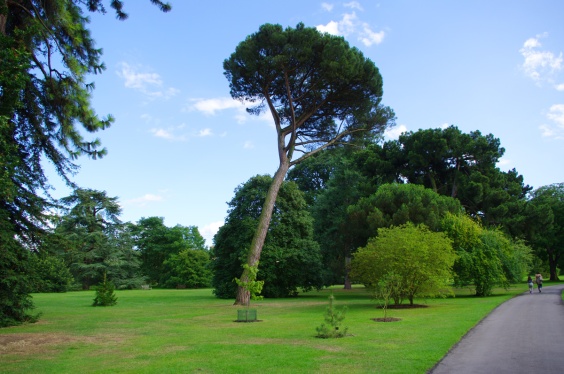
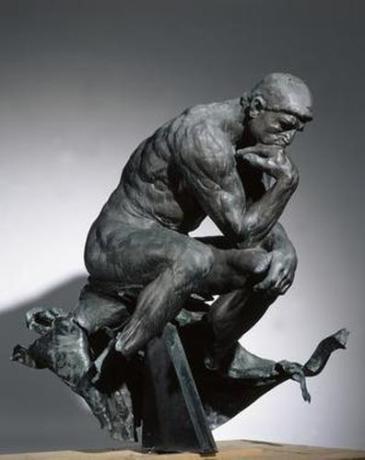
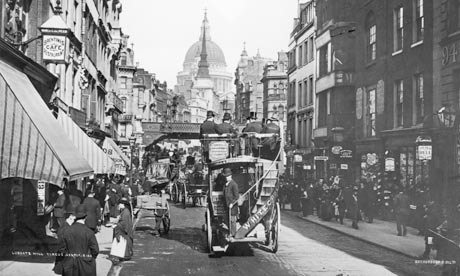
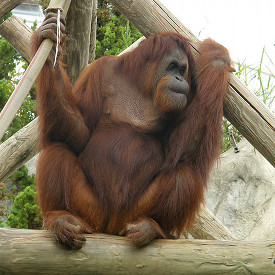
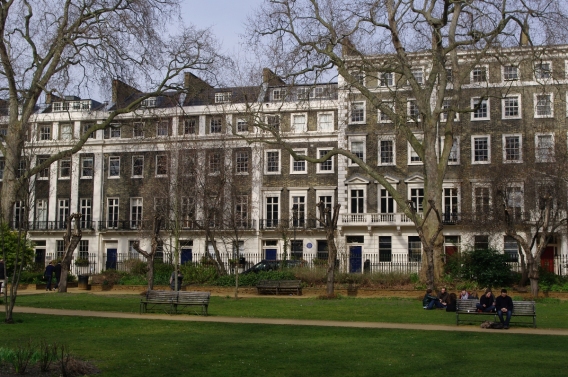
Wow! I’m not sure I’m ready to take on this novel right now, Tony, though I thoroughly enjoyed your account of it. Need to wait till I have about a month with not too many things occupying my mind and time. This is not the “light” reading which is about all I can handle for the next few months.
Thanks for the comment Jean. Go on , have a go at reading it. It gives you a great sense of London life at the time. You might enjoy it. All the best, Tony
Thanks for this sumary, I have just begun to read the novel, and it has broadened my knowledge a great deal. I can now look out for the theme you mention and am sure to gain much more from my reading than I would otherwise.
Hi Dianne. I hope you enjoy the novel. I have not done anything on the blog for a while. I visited Monks House recently and bought an edition of Woolf’s short stories. I also have an edited book of some of her diaries which I want to get through. I am feeling the urge to get back to Virginia!! Ha! Ha!